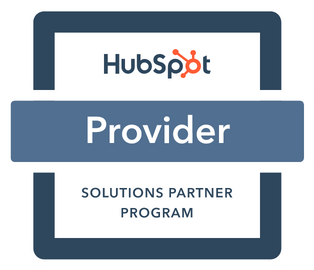
On this page
Case Study: Jack noticed a 20%-off coupon on his Facebook feed offered by the online phone accessory store for the phone case he was just browsing but did not purchase due to its price. The coupon helped him make up his mind and follow through with the purchase.
Every single day 2.5 quintillion bytes of data are collected across the Internet. This enormous information database helps businesses to understand their customers, thus allowing them to both personalise current customer experiences and find the most suitable customers who are likely to become a conversion.
What is a Customer Database?
A customer database is formed by the collection of information from each person who interacts with different virtual channels of your business. This information includes their name, address, phone number, and e-mail address. With the wide range of digital tools currently available, a business can also collect more insightful customer data throughout relevant digital assets.
7 Benefits of Having a Customer Database
1. Acquire New Customers
Your organisation can set clearer customer attributes by using demographic, geographic and consumer interest information. These more specific groups can then be targeted accordingly through paid ads. This will allow you to drive more qualified leads to your website.
2. Grow The Lifetime Value of Your Existing Customer Base
Secondly, your business is able to retarget existing customers with emails and personalised ads throughout the different stages on their customer journey. This will ensure longer and more successful customer relationships.
3. Identify High-Value Audiences
Customer data can indicate the attributes of buyers that tend to purchase or return high value goods or services. It’s important to build a buyer persona for these customers in order to target them at the right stage of their customer journey. This will also help to drive similar leads to your website.
4. Improve Customer Retention And Prevent Customer Churn (Attrition)
Improve customer retention by segmenting existing and incoming customers based on behaviour touchpoints. By visualising the footprint of these two distinct groups of website visitors, you can see what makes them convert and what stops them from doing so.
5. Improve And Personalise The In-Store Experience
Having a customer database can allow you to personalise your good or service recommendations, as you’ll have access to crucial information that helps you understand your customers and how they engage with your brand. Outside of your website, you can also leverage your database to target potential customers (i.e. those who leave items in the cart) with precise, personalised ads (i.e. vouchers for the items in the cart).
6. Improve Cross-Functional Collaboration/ Omnichannel Management
Your organisation can improve omnichannel management by becoming familiar with customer behaviours and characteristics. Your physical stores and online stores can deliver a more consistent marketing message and experience (sales and marketing alignment). Tying your channels together could help boost physical store interaction by up to 80%.
7. Keep Track Of Your Marketing Performance
Customer databases allow you to monitor your performance, and provides you with an overview of the success of your marketing strategies. This also allows you to more effectively manage your costs.
Popular Tools to Build a Customer Database
1. Google Analytics

Google Analytics is the most common and popular tool for customer data collection. Once you implement the tracking codes on your website, the tool can help you collect visitor information including the number of users, session statistics, approximate geolocation, browser and device information, etc. You can even connect this tool with the other platforms (i.e. Google Ads) to integrate the data across multiple platforms.
2. Google Ads

Google Ads is used to set up all ads on the Google platform. It collects the data of your ad campaigns’ performance (CTR, ROI, Google Quality Score) and the audience you are showing to (postcodes, devices, search terms, etc.). Optimising the ads using educated audience targeting strategies helps to improve the ad campaigns’ performance and drive more qualified leads to your website.
3. Hotjar

When it comes to optimising user experience and eliminating frictions throughout the buyer’s journey, (which is the process of optimising conversion rate (CRO)), Hotjar is the go-to tool as it offers great insights into your website user’s behaviours. After implementing the Hotjar tracking codes, you can view how users browse and navigate across your website, the device used, what time of day it was, and their location. Its Heatmaps feature provides an overview of where users click on the page and how far they scroll. With this information, you can take a walk in your customer’s shoes and optimise your website’s user experience to drive conversions.
Conclusion
Building a customer database is a must for businesses. However, with the wide range of database tools available in the market, brands should choose wisely in order to effectively meet their business needs. For instance, Hotjar offers different subscription plans; Say you are an SME with more than 100 daily visits to your website, it would cost you at least $79/month (Hotjar works best when matched with other tools to build insightful databases).
Digilari Media offers a wide range of custom digital marketing packages to support SMEs, with all relevant digital tools to build and leverage insightful customer databases. Tied together with appropriate digital marketing strategies and comprehensive reporting, Digilari Media will help you achieve your business goals. Book your first FREE consultation with us today!
Book Your Free 30-min Consultation With a Strategist
Claim your free website audit with one of our specialists.





